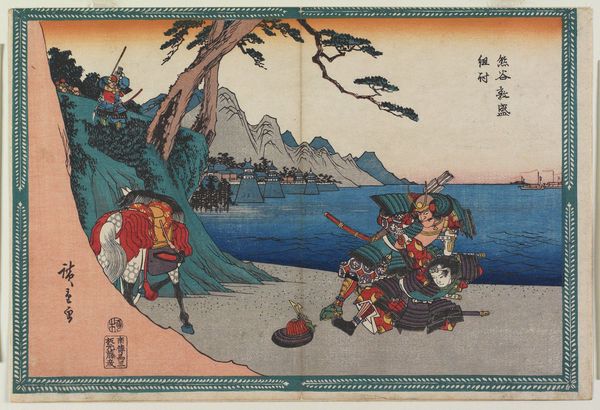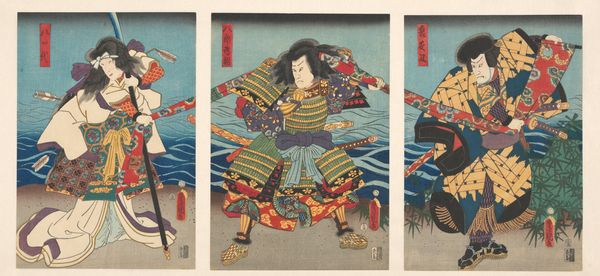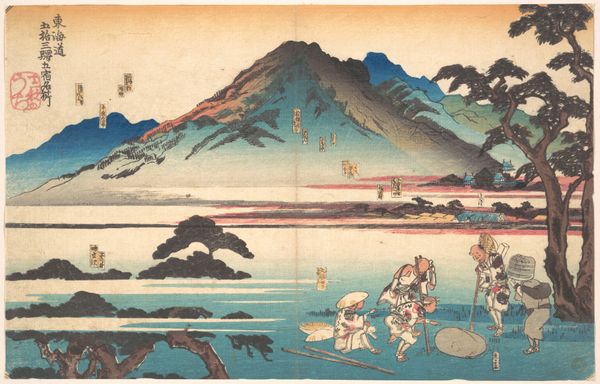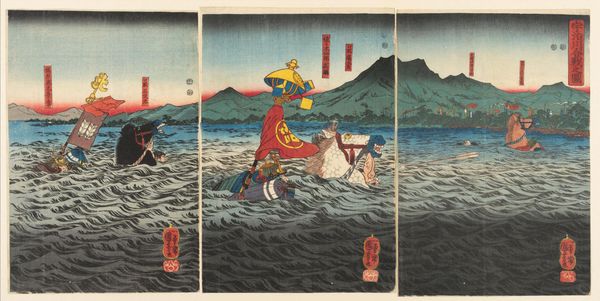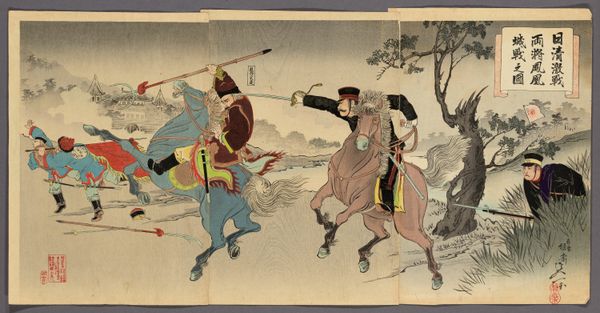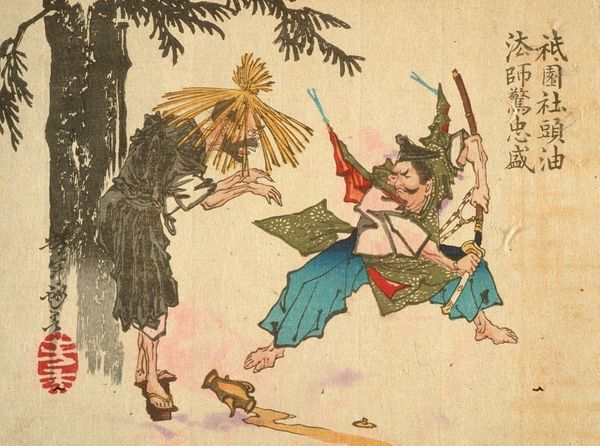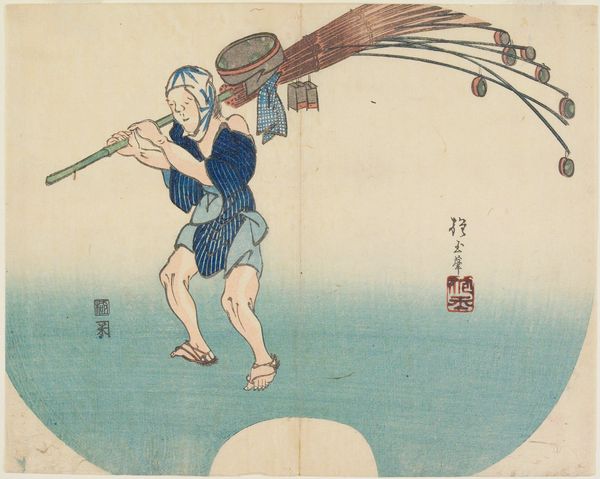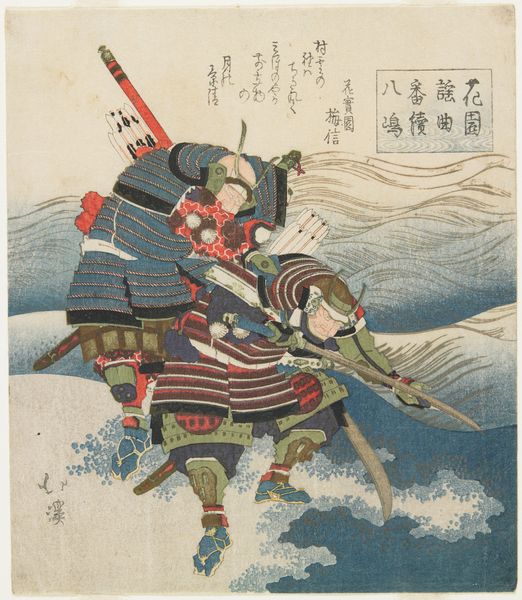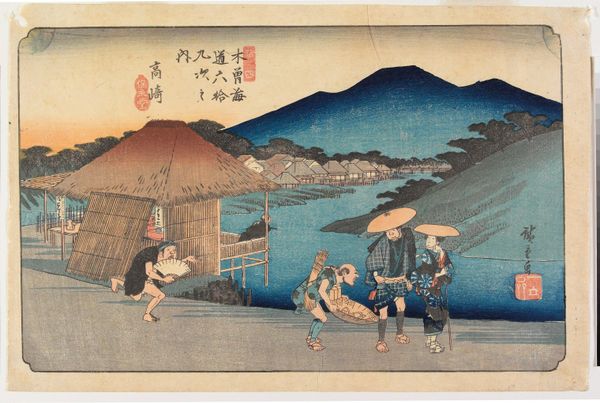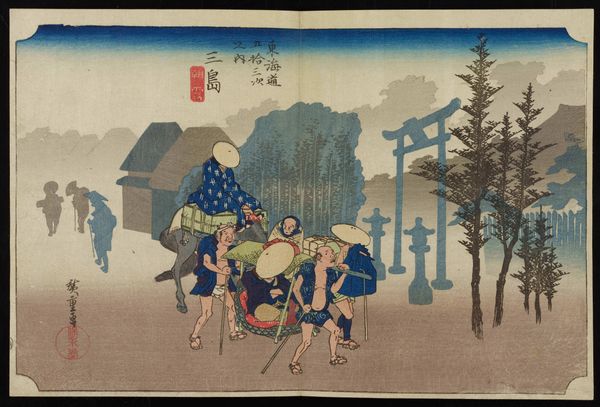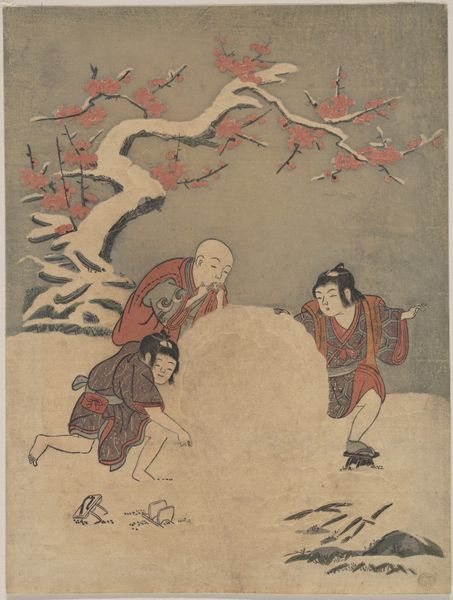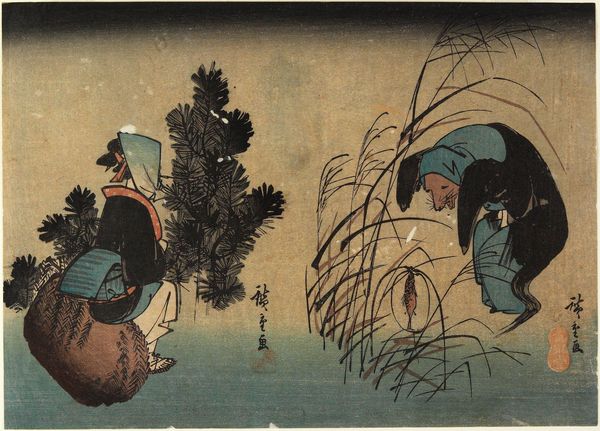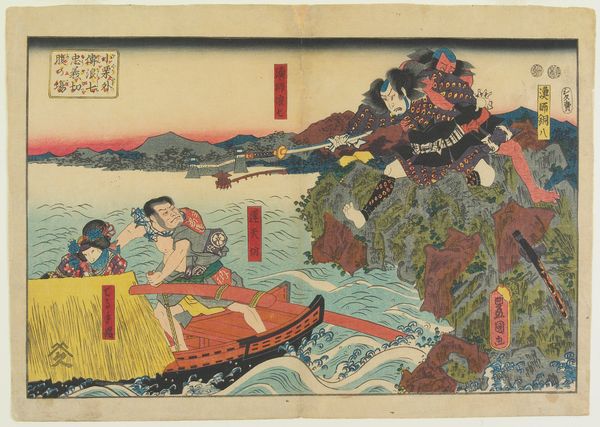
Sasaki Moritsuna Asking Fisherman to Reveal the Shallows Where His Troops can Cross and Attack the Taira Forces at Fujito in Bizen Province (Sasaki Moritsuna Bizen no kuni Fujito no watari ni Heigun o osowanto gyojin ni mizu no senshin o tou zu) 1884
0:00
0:00
Copyright: Public Domain
Curator: Here we have Mizuno Toshikata's woodblock print from 1884, titled "Sasaki Moritsuna Asking Fisherman to Reveal the Shallows Where His Troops can Cross and Attack the Taira Forces at Fujito in Bizen Province." Editor: My initial impression is of a story unfolding, captured in this vivid snapshot. The texture of the water looks really appealing, quite dynamic in its rendering. Curator: Indeed. Toshikata presents a scene steeped in the Genpei War. Sasaki Moritsuna, the commanding figure, seeks the fisherman's knowledge of the terrain, knowledge crucial for military strategy. Look at how Moritsuna dominates the composition, his gesture a potent symbol of command and quest for victory. Editor: It's interesting how the print highlights labor: The fisherman's local knowledge against the commander's power, suggesting different kinds of work with uneven exchange. I wonder about the collaborative aspect of creating the print, between artist, carver, and printer. Curator: The fisherman, presented low and kneeling, is vital. His humble position belies his essential knowledge. Toshikata conveys a deep respect for local knowledge, weaving it into the narrative of warfare. And consider the woodblock's role itself; disseminating the image and solidifying cultural memory of this event. Editor: Thinking about materials, the colour choices really stand out. That deep blue and red juxtaposed across the print. I wonder about the availability and the cost of the different pigments that Toshikata has at his disposal in the late 19th century, the period when Japan was intensely industrializing. Curator: Absolutely. Pigments are also tied to symbolism. The reds, for example, have connotations of vitality, strength. Beyond the literal representation of clothing, the colour contributes to the emotional weight of the figures, a very traditional deployment of codified colour in narrative painting. The landscape and weather contribute significantly too: war couldn't be further from their tranquil surface appearances. Editor: So even as it depicts conflict, it’s bound by specific industrial processes and consumer habits within Japanese society in the late 19th century. Looking closely reminds you that its beautiful aesthetic isn’t separate from its social and material making. Curator: Thank you. Bringing the labour into view makes it much more engaging and enriches how we receive and continue its symbolic meaning. Editor: Thanks. I came in seeing a story of bravery and cunning; now, I can't ignore the story embedded within the physical object and its production.
Comments
No comments
Be the first to comment and join the conversation on the ultimate creative platform.
